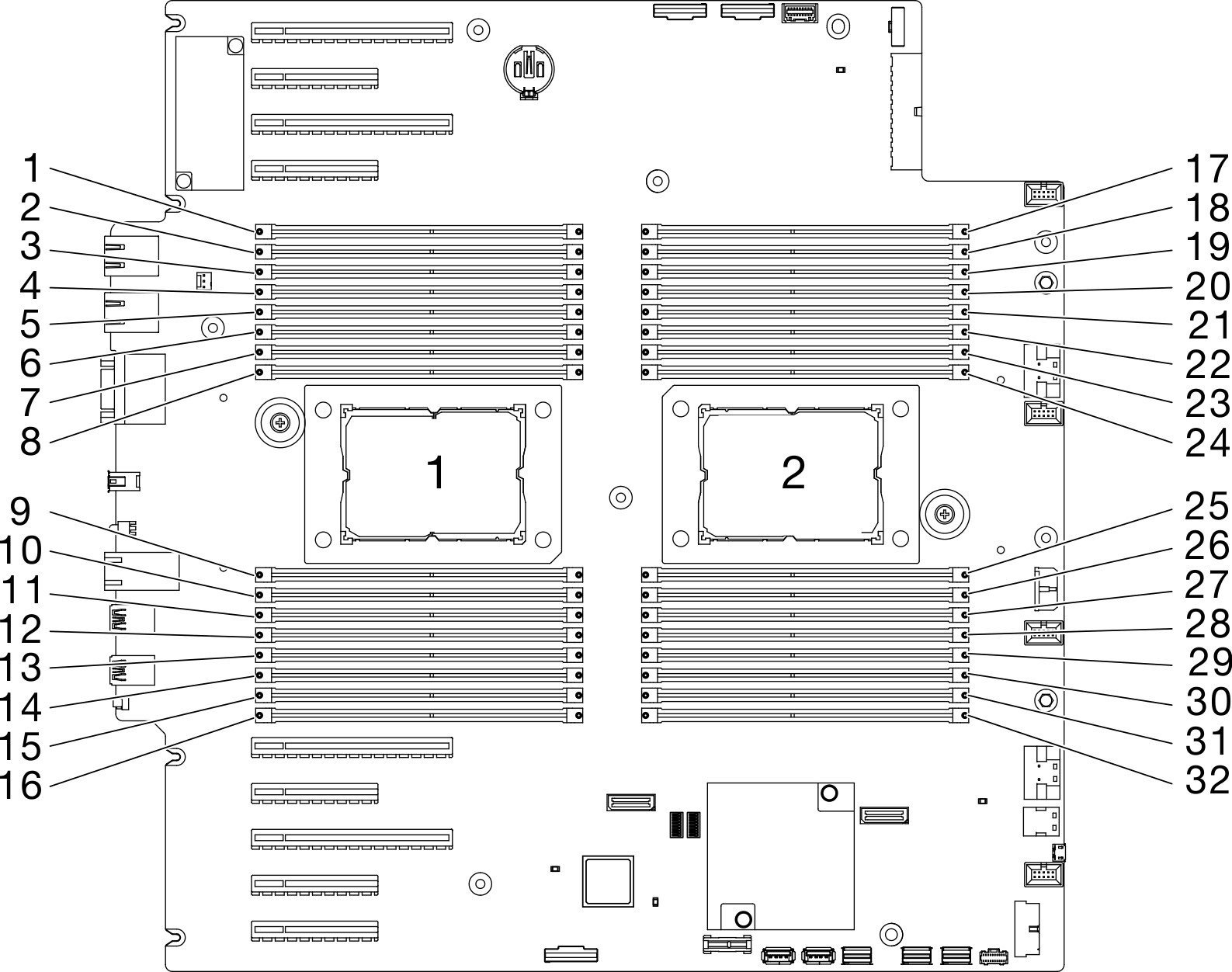Technical rules for memory modules
Memory modules must be installed in a specific order based on the memory configuration that you implement on your server.
For a list of supported memory options, see: Lenovo ServerProven website
Memory installation requirements:
A label on each DIMM identifies the DIMM type. This information is in the format xxxxx nRxxx PC4-xxxxx-xx-xx-xxx. Where n indicates if the DIMM is single-rank (n=1) or dual-rank (n=2).
At least one DIMM is required for each processor. Install at least six DIMMs per processor for good performance.
When you replace a DIMM, the server provides automatic DIMM enablement capability without requiring you to use the Setup utility to enable the new DIMM manually.
All DIMMs must be either all RDIMMs, or DDR4 and PMEMs.
Mixing x4 and x8 DIMMs in the same channel is allowed.
Install DIMMs of the same speed for optimal performance. Otherwise, the BIOS will find and run the lowest speed among all channels.
Always populate DIMMs with the maximum number of ranks in the farthest DIMM slot, followed by the nearest DIMM slot.
Memory modules from different vendors are supported.
The following table includes all the feasible combinations of different types of DIMMs:
Table 1. DIMM compatibility. Table of DIMM mixing support DIMM Types RDIMM 3DS RDIMM PMEMs RDIMM V X V 3DS RDIMM X V V PMEMs V V X
See the following to locate the DIMM slots and corresponding channels.

| Memory controllers | Controller 2 | Controller 3 | Controller 1 | Controller 0 | ||||||||||||
|---|---|---|---|---|---|---|---|---|---|---|---|---|---|---|---|---|
| Channels | Channel 1 (F) | Channel 1 (E) | Channel 1 (H) | Channel 0 (G) | Channel 0 (C) | Channel 1 (D) | Channel 1 (A) | Channel 1 (B) | ||||||||
| Slots | 1 | 0 | 1 | 0 | 1 | 0 | 1 | 0 | 1 | 0 | 1 | 0 | 1 | 0 | 1 | 0 |
| DIMM numbers (processor 1) | 2 | 1 | 4 | 3 | 6 | 5 | 8 | 7 | 9 | 10 | 11 | 12 | 13 | 14 | 15 | 16 |
| DIMM numbers (processor 2) | 31 | 32 | 29 | 30 | 27 | 28 | 25 | 26 | 24 | 23 | 22 | 21 | 20 | 19 | 18 | 17 |